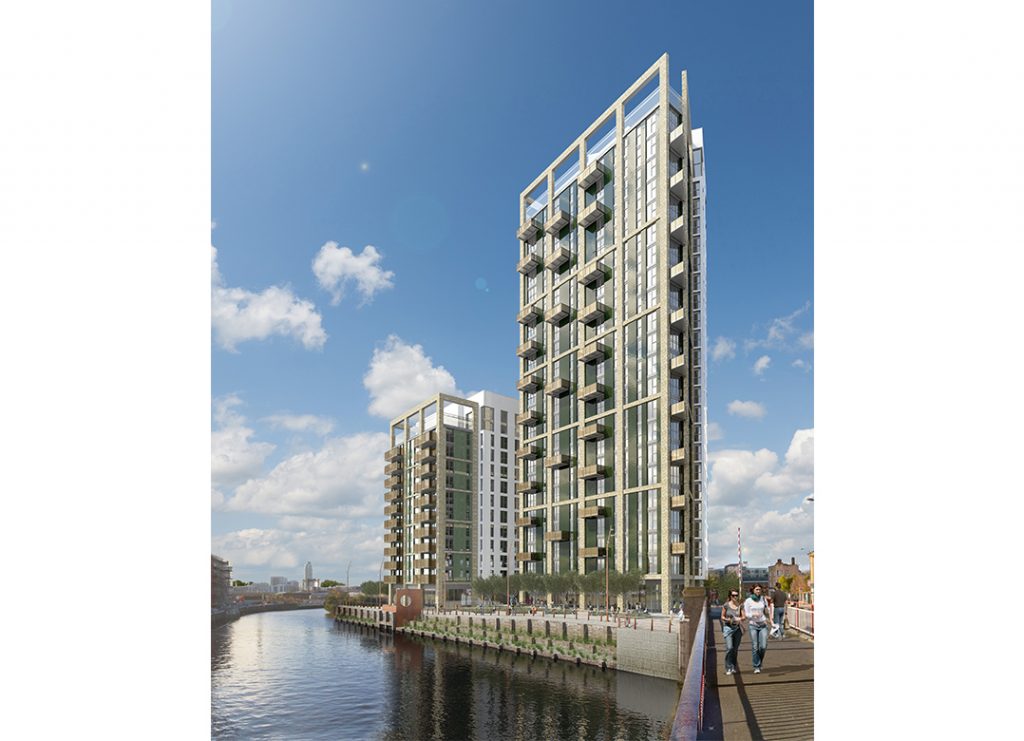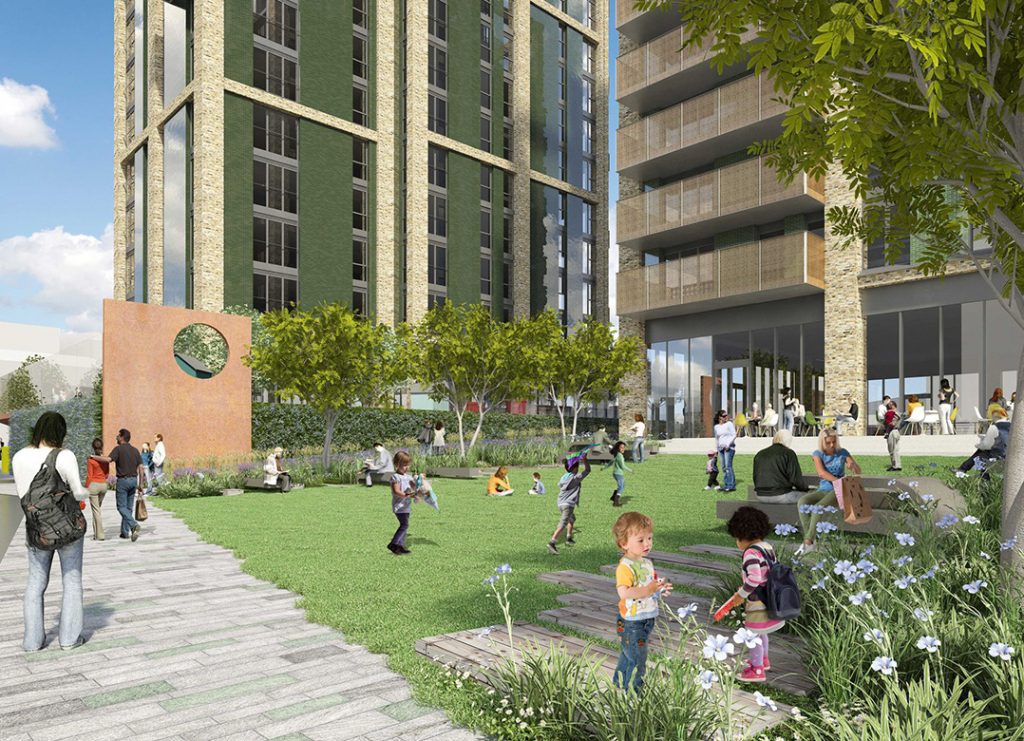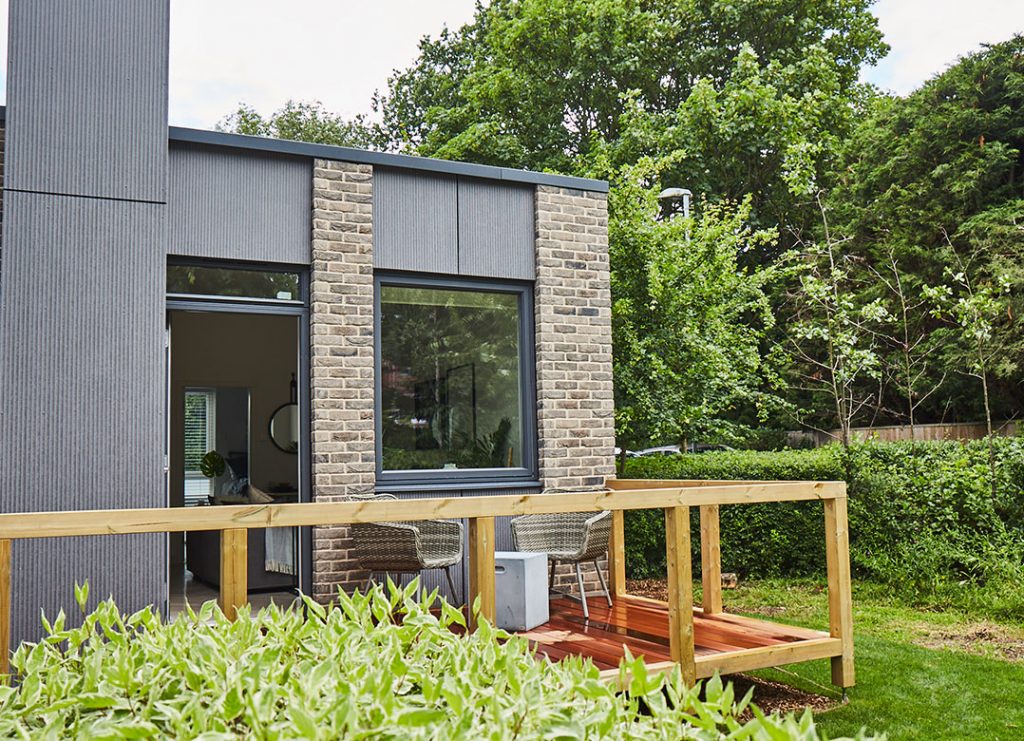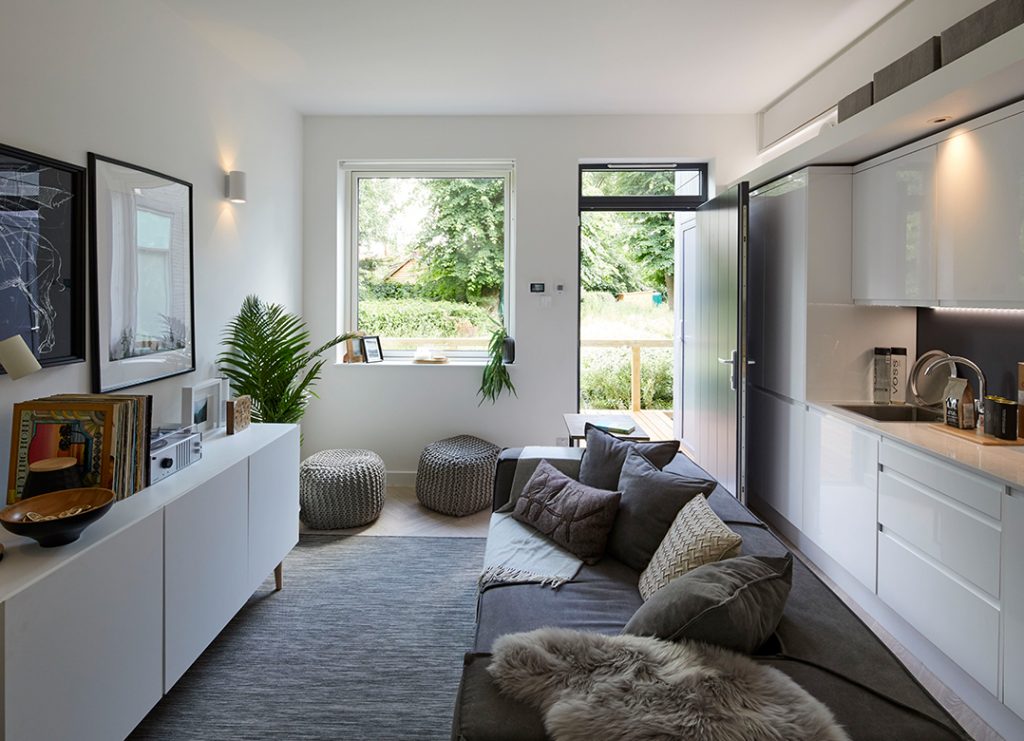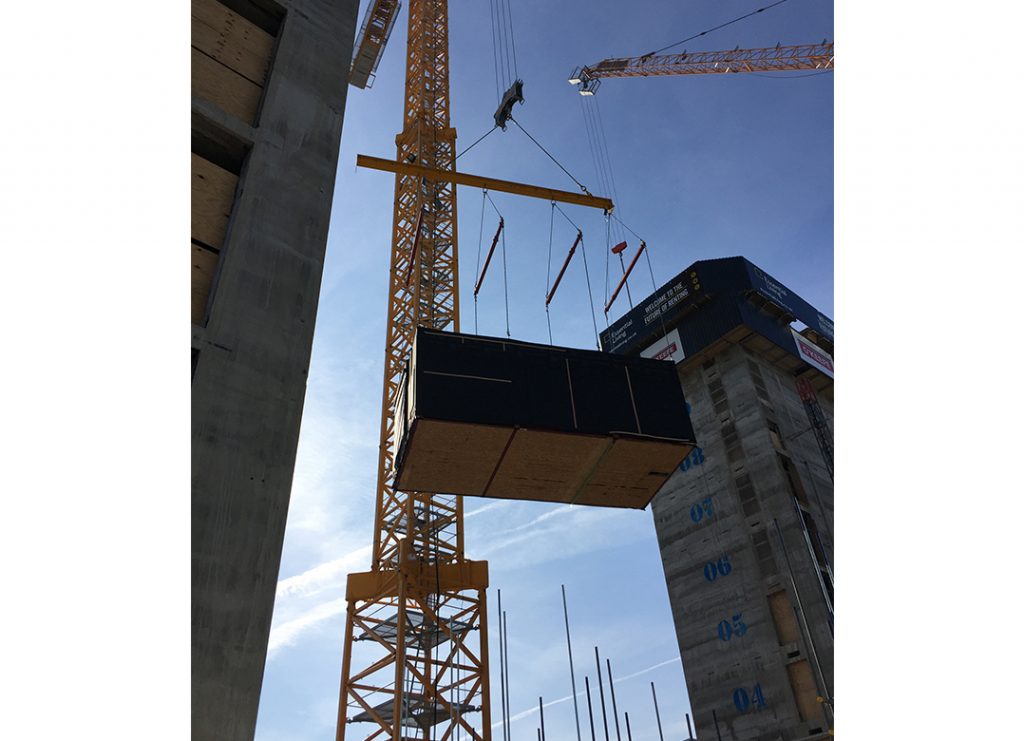BUILD TO RENT: UNLOCKING OPPORTUNITY
A NEW HOUSING CATEGORY OFFERS AFFORDABLE CERTAINTY FOR HOME-SEEKERS AND POSSIBLE OPPORTUNITY FOR THE OFFSITE CONSTRUCTION SECTOR, WRITES BEVERLEY JOHANSON.
Build to rent is shaping up as an interesting sector of the development industry and a new asset class for institutional investors, with predictions it could evolve into a $300 billion industry in Australia.
The concept is simple, but in Australia where all apartments in a large block are owned by individuals and investors on a small scale, it is unusual. A developer, with backing from an institution such as a superannuation fund, holds the apartments and rents them out through a management company. Long-term leases are encouraged, providing security for tenants, rent that is anticipated to be more affordable than the open market, and a long-term income stream for the investor.
The use of prefab has several advantages for this market. There is freedom in the design of the buildings being largely unrestricted by client demands; there are the efficiencies offered by the prefab and modular processes, and returns maximised by rentals being collected six months or so earlier than they would have been if traditional building methods had been used.
About one third of Australians rent and according to a survey by Choice and the National Association of Tenant Organisations, most live in a “culture of fear” with the greatest worries being concern the rent might increase, fear of eviction and fear that the lease might not be renewed.
A report by the Committee for Economic Development of Australia (CEDA) concluded that demand and supply problems were set to continue for some time. “Barring any major economic jolts, demand pressures are likely to continue over the next 40 years and supply constraints will continue. This is particularly the case in capital cities with a growing population and where an increasing proportion of Australia’s population are expected to reside,” the report said.
The Australian Housing and Urban Research Institute estimates 1.3 million or about 14 per cent of Australian households are in a state of housing need, whether unable to access market housing or suffering
rental stress.
Long-term leases benefit both parties. The renters know where they will be living from year to year and investors know that they have several years of guaranteed rent.
Build to rent has been operating in Europe, the UK and the US for several years. More than three million homes were built in the last three years in the US and the Australian superannuation fund REST has 3000 apartments there. In Britain, which started later than Germany and France, around 96,000 homes are completed or planned.
The first tenants are moving into Britain’s largest build to rent project — a £3 billion, 7600 apartment development in Wembley Park, which will include 6800 rental homes.
“Barring any major economic jolts, demand pressures are likely to continue over the next 40 years and supply constraints will continue. This is particularly the case in capital cities with a growing population and where an increasing proportion of Australia’s population are expected to reside.”
Report by the Committee for Economic Development of Australia (CEDA).
UK government backing for the build to rent sector is strong. Wembley Park will receive a £65 million government boost and support for the sector includes changing planning rules to ease building in areas where it’s needed and the introduction of three-year or longer tenancies. There are indications that the Government will make it easier for developers to offer affordable rent, plans to ban letting-agent fees when a new tenancy is signed and to impose civil penalties on rogue landlords.
In July, RHP, which owns and manages more than 8000 homes in Richmond and Hounslow, along with UK insurance giant turned housing manufacturer Legal & General, unveiled a new modular home product for the build to rent market in England.
LaunchPod, a 26 square metre modular apartment, arrives on site complete with kitchens, bathrooms, doors, painting and carpets.
The architects, Wimshurst Pelleriti say that RHP was adamant that it did not want to use maintenance-heavy, space-saving gimmicks such as fold-down beds. “Their aim throughout was to provide high quality accommodation that did not compromise on quality or feeling of space.”
David Done, RHP’s chief executive, said at the unveiling of LaunchPod:
“We built the prototype as we wanted to demonstrate that if a smaller space is well designed and well built, it can be an attractive place to call home. We’re thrilled with the interest we’ve received so far and the positive feedback from those who came to our event.”
“We built the prototype as we wanted to demonstrate that if a smaller space is well designed and well built, it can be an attractive place to call home. We’re thrilled with the interest we’ve received so far and the positive feedback from those who came to our event.”
RHP chief executive David Done (at the unveiling of LaunchPod).
Legal & General has demonstrated enormous confidence in the use of prefab in this sector.
Through Legal & General Modular Homes it has established a 51,000 square metre factory which will have the capacity to produce 3500 LaunchPods a year and its website says that it is “hiring on a massive scale”, recruiting “in excess of 400 jobseekers”.
In partnership with Dutch pension fund manager PGGM, Legal and General is planning 3000 build to rent apartments in various cities across England and has said it anticipates investing £1 billion in the sector.
London’s first modular build to rent project, Creekside Wharf at Greenwich, will be completed mid-2018.
The steel-framed modules fitted around a concrete core will create 249 homes in one 23-storey block and a 12-storey block designed exclusively for families. More than 1400 square metres of shared amenity space will include exercise areas, cinemas and communal lounges.
Russell Pedley, Director of Designers Assael Architecture, says: “Offsite methods are ideally suited to build to rent, offering faster delivery, higher energy efficiency and complementing a longer term outlook not constrained by the absorption rates of build for sale.”
“Offsite methods are ideally suited to build to rent, offering faster delivery, higher energy efficiency and complementing a longer term outlook not constrained by the absorption rates of build for sale.” Russell Pedley, Director of Designers, Assael Architecture.
Simon Underwood, Managing Director of Elements Europe, developer in partnership on the project, says: “Modular solutions have been used for many years throughout the hotel and student accommodation sectors and our entry into the build to rent market is just a natural progression, bringing homes forward sooner, reducing capital construction costs, and improving the quality and safety of delivery.”
Sixty per cent of the work will be carried out in the factory and time spent on site reduced to 32 weeks.
“Modular solutions have been used for many years throughout the hotel and student accommodation sectors and our entry into the build to rent market is just a natural progression, bringing homes forward sooner, reducing capital construction costs, and improving the quality and safety of delivery.”
Simon Underwood, Managing Director, Elements Europe (partner developer – Creekside Wharf).
The idea of build to rent is new to Australia, but there is a lot of activity happening, with three big residential players Lendlease, Mirvac and Stockland all preparing to enter this new sector.
Mirvac appointed UBS to seek institutional investment to form a $750 million build to rent vehicle. Chief executive of Mirvac, Susan Lloyd-Hurwitz, said in The Australian Financial Review in September that she saw an opportunity for an institutional rental market to operate in Australia and “we are currently preparing to invite investors to join us in the opportunity”.
“Build-to-rent can provide secure, quality, long-term and professionally managed rental accommodation in key urban locations providing people with this choice and security,” Lloyd-Hurwitz said.
The Mirvac model has been described as a “club of investors” – Liv by Mirvac – which will start with a complex in Sydney Olympic Park then expand
with demand.
International construction giant LendLease is well ahead of the game and has been constructing build to rent developments in the UK and US for some time.
Chief executive Steve McCann said there was strong demand for a local product but there were some tax barriers “that make it a little bit more difficult in Australia to get to the right sort of return profile”.
“Our view is it requires a collaborative effort by business and government to try and make sure that that market is in a shape to meet the demand that is growing out there and we, along with others, will continue to look at whether they can stack up,” he said.
Andrew Whitson, Stockland chief executive, is cautious about return but has said that the build to rent model could be a “game changer” for Australia.
Salta Properties will begin construction on a $330 million build to rent mixed-use development in Docklands Melbourne designed by prestigious architecture firm Fender Katsalidis. It will contain 260 apartments and a 170-room hotel.
“Modular solutions have been used for many years throughout the hotel and student accommodation sectors and our entry into the build to rent market is just a natural progression, bringing homes forward sooner, reducing capital construction costs, and improving the quality and safety of delivery.”
Simon Underwood, Managing Director of Elements Europe.
Scape, which builds student accommodation, is including 146 build to rent units in a 60-storey tower in the Melbourne CBD.
The build to rent sector has attracted scepticism about the level of return on investment, and the potential impact of the Federal Government’s new bond aggregator which is predicted to lend $1 billion to ease the pressure on affordable housing. GST and tax on residential property income are also areas where it is felt that discussion is required.
The Victorian Government Minister for Planning, Richard Wynne, commenting on the opportunities that build to rent offered the prefab industry said: “We are only too glad to work with the building industry on innovative ways to make building, owning or renting homes more affordable – and that includes emerging build to rent proposals.”
He went on to say that everyone deserves the safety and security of their own home. “We know that the supply of housing is a key cornerstone of housing affordability and every conversation about how we can help Victorians live in the home they want to is a conversation worth having,” Wynne said.
“We know that the supply of housing is a key cornerstone of housing affordability and every conversation about how we can help Victorians live in the home they want to is a conversation worth having,” Victorian Government Minister for Planning, Richard Wynne.
The NSW government is establishing a working group to look at creating a build to rent housing sector, Treasurer Dominic Perrottet said.
Dr Matthew Palm, Postdoctoral Research Fellow, Transforming Housing Research Network, at the University of Melbourne, has experience of build to rent in the US. He says that it works best when it’s available in the more expensive middle-class suburbs and accessible to people who work in the area but don’t earn the income to buy there. He said that at a time when job certainty was dwindling, long-term leases offer people a sense of security.
“Large two and three-bedroom apartments suitable for families are desperately required. There is a real need for apartments that are spacious and feel like a home,” he said.
He says that Australia has everything it needs to kickstart this sector, but it will need government support to reach its full potential.
“In the US, there has been government assistance. A lot of build to rent got started with support from government.”
“In Australia, there is a bias in favour of owned properties built into the tax code.”
He said that from a social point of view, built to rent apartment living has advantages. With the nature of employment changing, long-term leases can provide a sense for certainty for people. “There used to be certainty around a job, but that’s not there anymore.”
A strong sense of community develops in these buildings, he says, that he hasn’t seen in apartment buildings in Australia. “Because of the long leases and because there is one point of contact for problems and services, you get more of a neighbourhood developing.”
Superannuation funds are among the largest investors in build to rent overseas but it remains to be seen if that will be the case here.
AustralianSuper has expressed reservations about the potential return. At an Australian Property Institute conference in August, AustralianSuper senior investment manager for property Christine Phillips said that the level of returns was in question.
“I don’t dispute the demand side of it. I think that there is definitely a market for institutional owned rental; professionally run rental accommodation that treats its tenants with respect. The question for everyone is, what return do we need to invest in Australia? And that’s proving difficult.”
“I don’t dispute the demand side of it. I think that there is definitely a market for institutional owned rental; professionally run rental accommodation that treats its tenants with respect. The question for everyone is, what return do we need to invest in Australia? And that’s proving difficult,.”
Christine Phillips, AustralianSuper senior investment manager – property.
There has also been concern about the Treasurer Scott Morrison’s moves to stop foreign institutional investors in real estate from receiving favourable tax treatment. This means that Managed Investment Trusts, the main vehicle for international investors to access Australian property, will only apply to low-cost community housing.■

